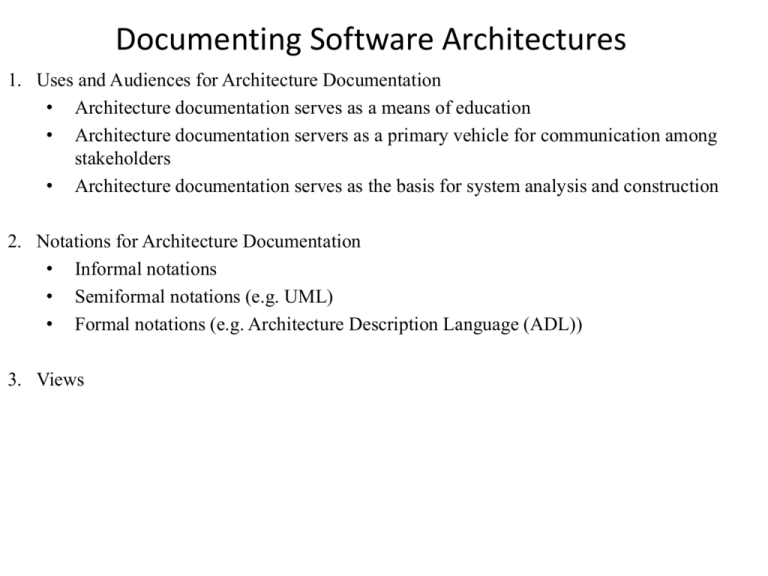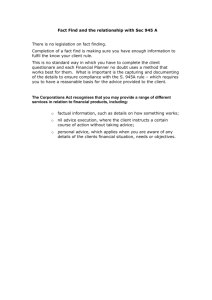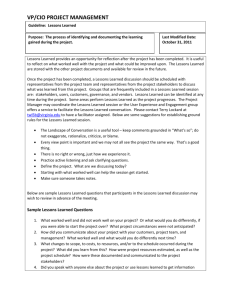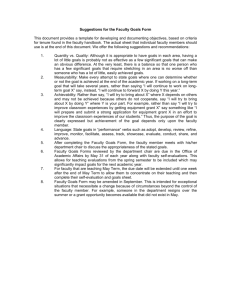Documenting Software Architecture
advertisement

Documenting Software Architectures 1. Uses and Audiences for Architecture Documentation • Architecture documentation serves as a means of education • Architecture documentation servers as a primary vehicle for communication among stakeholders • Architecture documentation serves as the basis for system analysis and construction 2. Notations for Architecture Documentation • Informal notations • Semiformal notations (e.g. UML) • Formal notations (e.g. Architecture Description Language (ADL)) 3. Views Documenting Software Architectures Documenting Software Architectures Properties of a module in module view • Name • Responsibility • Visibility of interfaces • Implementation information • Mapping to source code units • Test information • Management information • Implementation constraints • Revision history Documenting Software Architectures Documenting Software Architectures Properties of a component or connector in C&C view • Name • Type • Reliability • Performance • Resource requirements • Functionality • Security • Concurrency • Modifiability (for data message) • Tier Documenting Software Architectures Documenting Software Architectures Documenting Software Architectures Views • Quality Views For documenting how quality attribute requirements are fully realized in the architecture design. • • • • • Security view Communication view Exception or error-handling view Reliability view Performance view Documenting Software Architectures 4. Choosing the Views • • • Step 1: Build a stakeholder/view table Step 2: Combine views Step 3: Prioritize and stage (usually decomposition (module) view first) 5. Combining Views • • The easiest way to merge views is to create an overlay that combines the information that would otherwise have been in two separate views. Common combinations: • Various C&C views • Deployment view with either SOA or communicating-processes views • Decomposition view and any of work assignment, implementation, uses, or layered views 6. Building the Documentation Package • • Documenting a view Documenting information beyond views 7. Documenting Behavior (using trace-oriented languages) Traces are sequences of activities or interactions that describe the system’s response to a specific stimulus when the system is in a specific state. A trace describes a sequence of activities or interactions between structural elements of a system. • UML use case, sequence, communication, activity, state machine diagrams. Documenting Software Architectures Documenting Software Architectures Documenting Software Architectures Documenting Software Architectures Documenting Behavior • Documenting an architecture requires behavior documentation that complements structural views by describing how architecture elements interact with each other. • Two kinds of notations available documenting behavior • Trace-oriented languages • Traces are sequences of activities or interactions that describe the system’s response to a specific stimulus when the system in a specific state. • A trace describes a sequence of activities or interactions between structural elements of a system. • 4 notations of documenting traces: • Use cases • UML sequence diagram • UML communication diagram • UML activity diagram • Comprehensive languages • Architecture Analysis and Design Language (AADL): reason about runtime behavior • Specification and Description Language (SDL): for telephony Documenting Software Architectures Documenting Software Architectures






